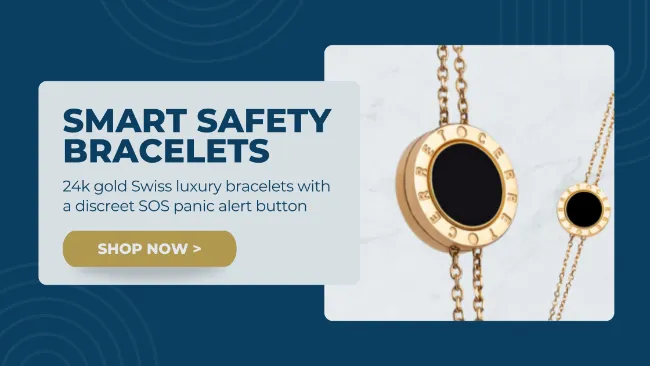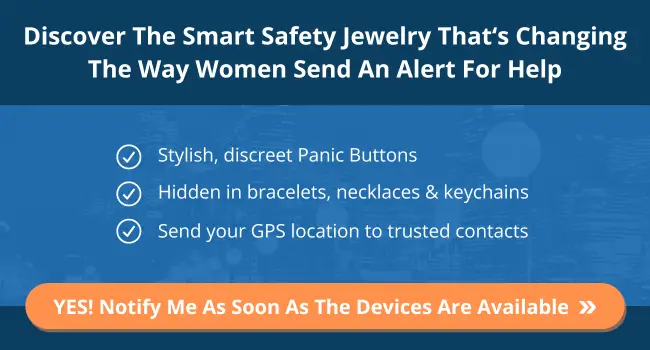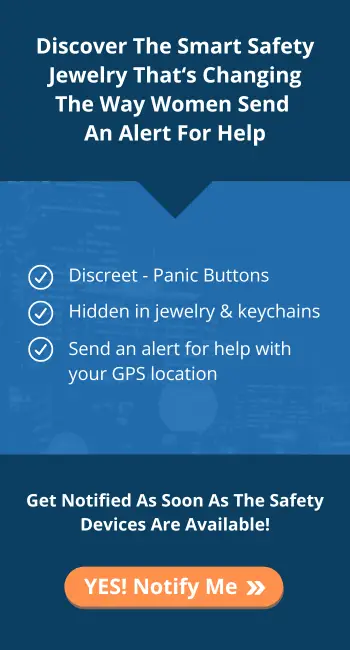TL;DR – Jump straight to smart safety jewelry >
Imagine it’s 3am in the year 1959 and you hear someone breaking into your home.
If you’re one of the few homes that even have a phone, you could be waiting minutes for the operator to answer.
As every second passes, you’re barely able to breath not knowing how long it will be before you’re manually transferred to the police.
And if you thought the wait time was your biggest barrier to getting help, it gets worse…
…Imagine knowing the perpetrator is getting closer, yet because your phone is attached to a chord in the wall, staying on the line meant you were a sitting duck!
Added to this, prior to the 1960’s there was no national 3 digit emergency number to dial. So if you were outside your home town, you would have to have known the local emergency number to call for help.
Thankfully, by 1961 Australia had introduced triple zero (000) as their national emergency number, and in 1968 the US adopted 911 nationwide.
Great, so at least by the 70’s you no longer needed to pack a rolodex of emergency numbers into your luggage.
Fast forward to now, and at least our smart phones allow us to become moving targets instead of sitting ducks!
But there are still key barriers to calling for help in an emergency depending on the situation you’re facing:
- Trying to push buttons on your keypad while you’re trembling in fear and simultaneously trying to deal with what you’re facing
- Making an emergency call in such terror, your voice is garbled and the operator can barely understand you
- Knowing you can’t make a call or state the nature of your emergency, as the perpetrator is within hearing distance
Whilst we’ve come a long way forward from the days where 3 digit emergency numbers didn’t exist, today’s emergency responders still face significant challenges.
On top of this, emergency responders are faced with another challenge…
…People’s natural tendency to panic when faced with danger.
How many people have the ability to remain calm, speak clearly & relay their address when faced with a life threatening situation?
Especially given when you’re out and about, you probably have no clue what your exact location is in the first place!
Enter: Smart Safety Jewelry devices for women with GPS & panic buttons
The smart safety jewelry devices coming on to the market offer several promising solutions:
Since the panic buttons are hidden in jewelry, attached to keyrings or clipped onto handbags, they don’t look like security devices so nobody can tell you’re wearing them.
They also offer a discreet way to send an alert for help in situations that millions of people face each year: not being able to speak in front of the perpetrator.
They eliminate the critical seconds wasted fumbling to find your phone and push the right numbers – when you’re in the midst of dealing with your situation.
Instead of relying on only one avenue (the emergency operator), they can alert a network of ‘trusted contacts’ with your GPS location so they can act on your behalf.
Knowing that help is on the way is what provides many victims with a critical ingredient needed to survive…
…Hope
So let’s dive in to the features and benefits of some of the wearable smart safety jewelry devices hitting the market.
Cerret 24K gold high-end luxury safety bracelets with a discreet SOS button
Designed in Geneva, Switzerland, where style meets innovation, the Cerret bracelet comes in 24k gold, rose gold and sterling silver plating and blends into any outfit.
But its true power lies beneath the surface…
Walking home alone? Meeting a new client? Here’s how Cerret’s smart features have your back:
- Two quick clicks of the discreet panic button sends a silent alert with your GPS location
- Emergency contacts alerted via sms and pre-recorded phone call
- Option to check-in and notify loved ones when you’re safely at your destination
- Family and friends live location monitoring request
- Evidence recording via audio
No matter which option you choose, Cerret’s chic design is sure to make a statement day or night.
Available worldwide in most countries
Price: approx USD $280 – with zero ongoing subscription costs
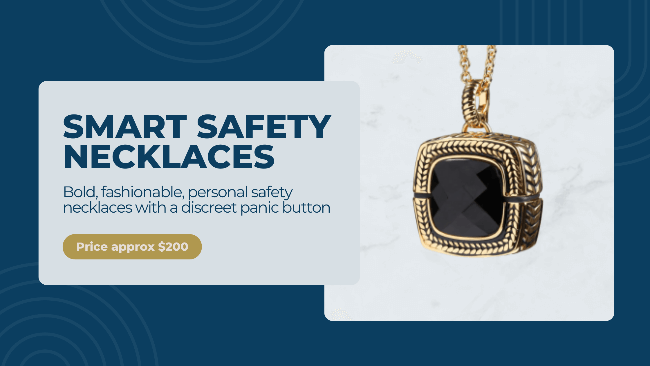
Stylish smart safety necklaces with hidden panic buttons & GPS location sharing
An elegant personal safety necklace that’s available in silver or gold finishes, in round or cushion designed shapes, and is crafted from hand cut resin stones in five fashionable colours.
The bold style of this necklace adds a touch of glamour to any outfit.
- Sends a silent alert by pressing the back of the necklace
- Can notify a ‘care group’ of up to five people
- Jewelry is paired with the FallCall app and requires a monthly subscription available with two options: Care group only, or 24/7 central monitoring service + care group.
Available in the US and Australia
Price: approx USD $200 + subscription
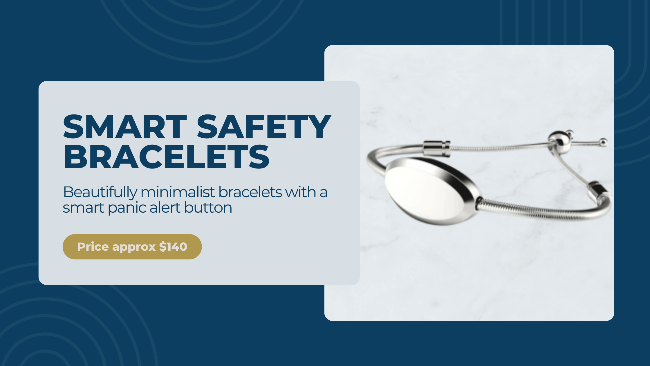
Minimalist smart safety bracelets with a discreet emergency alert button
A beautifully modern personal safety bracelet with a smart panic alarm that comes in silver, gold and rose gold.
The bracelet is designed to be beautifully minimalist, so it can fit with any style.
- Sends a silent alert by clicking the back of the bracelet
- Designated contacts will be able to see your live GPS location
- Ability to created timed “watch over me” sessions so your trusted contacts can see exactly where you are
- Can trigger a “fake call” to help you get out of a sketchy situation
- Option to pair with 24/7 alarm monitoring via ADT for extra peace of mind
Price: approx USD $140
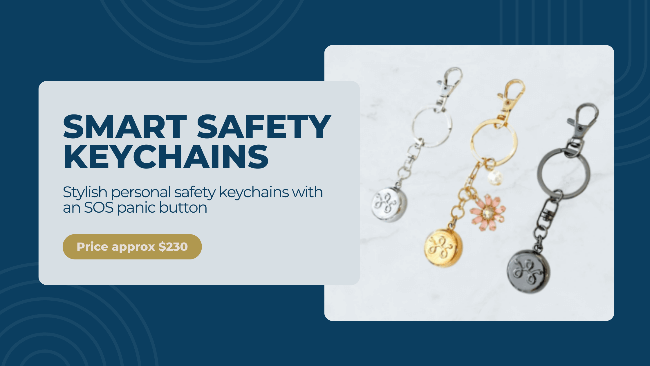
Chic personal safety keychains with a hidden SOS alert button
A range of chic, smart safety keychains with a built in SOS panic button, available in gold, silver and black.
- Sends a silent alert by double clicking the back of the charm
- Can notify up to five contacts and optionally 911 (US only)
- SOS alert can also be discreetly voice activated by using a secret phrase
- Emergency contacts receive a text message with your live GPS location
- Includes a timed safety timer that allows designated contacts to track you
- Jewelry is paired with a safety app and requires a monthly subscription to 24/7 security monitoring
Price: approx USD $230 + subscription
From ‘watch over me’ features, to fake phone calls and silent panic alerts, these tiny devices pack some pretty big features.
The domestic violence ad that opened a nation's eyes to reality...
Remember NoMore.org’s official Super Bowl ad?
It highlights a topic that people find hard to talk about: Intimate Partner Violence.
Their slogan: “When it’s hard to talk it’s up to us to listen” got the message across brilliantly, by drawing attention to something most people choose not to think about…
…The difficulty in making an emergency call when your perpetrator is present.
It’s a stark reminder that the majority of violence against women happens in a situation where they’re unable to speak.
Kate Ranta's Near Fatal Shooting Touches A Nerve That Many Of Us Fear...
That being, how would I react if my life was under threat?
The truth is, what scares us most is we won’t ever know unless it’s actually happening.
We ‘hope’ that our scenario might pan out differently to what we heard on the news.
But as Kate stated in an NBC news interview:
“I called 911 from my cellphone but the operator couldn’t hear me and she also couldn’t locate me. And I had to repeat my address multiple times.”
So whilst wearable smart safety jewelry devices certainly aren’t a solution to the core issues of lack of resources and education we face as a society, they do have the potential to get help underway in otherwise impossible circumstances.
Over to you…
Have you ever been in a situation where being able to press a button and send your GPS location with an emergency alert would have helped?
If you could contribute to designing a wearable safety device, what features would it have?
Would you want it to send a silent alert? Or would you want it to have an ear piercing alarm?
Should the panic alert button be a part of your stylish jewelry or something that hooks on to your car keys?
Let us know your thoughts in the comments below.
And remember to hit the social share buttons so that you’re friends get to contribute too!


